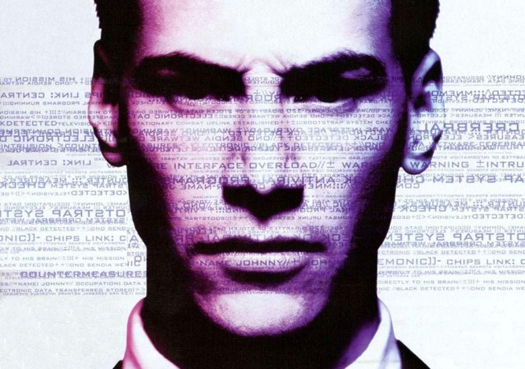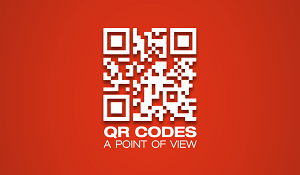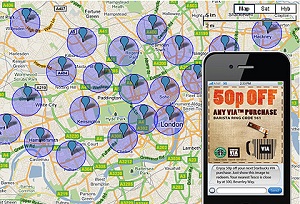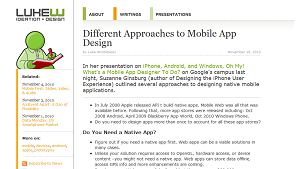Total Recall: How Mobile Photos Will Shape the Future of Marketing
This article was originally published at AdAge.com, where we contribute content for the Digital Next blog.
In the 1995 film Johnny Mnemonic, the title character, played by Keanu Reeves, has a cybernetic brain implant that stores vast amounts of data. Today, we all have this capacity, but the mechanism is in our hands, not our heads. Smartphones are helping us become, well, smarter – both expanding our memories and giving us access to the web's collective knowledge.
In many ways, the mobile device has become a mnemonic device - literally a tool to help us remember things. We might email information to ourselves, keep grocery lists on our mobiles, or performs a search to recall a fact. Increasingly, though, we simply take photos. We snap pictures of things we want to remember later or share with others. What was that book I wanted to get? What's the name of that restaurant? What do you think of this shirt? We are all developing photographic memories.
This behavior is increasingly common across age groups and income brackets. Cameras are now standard on mobile phones and as a result, they are now one of the most often used features. 85% of all mobile users worldwide have taken a photo with their phones, making it the second most popular mobile content activity after texting (88%), according to eMarketer. iPhones are the most popular camera used to take photos posted to Flickr.
This reasoning behind this is simple: When you're on the go—in a "mobile environment"—it's much quicker to snap a photo than to type in text, and the phone is a camera that's always on us. I'd even argue that's why photo-sharing apps like Instagram and Path are becoming so popular –we're creating quick, expressive status updates through pictures. Forget 140 characters, a picture is worth a thousand (at least). Rising generations will rely more heavily on graphics and imagery, and it will affect the way they perceive the world.
Several companies have taken notice of this behavior and developed innovative tools around it. Evernote's service lets you store photos with tags and also makes printed and handwritten text inside your images searchable, so you can find them quickly. Amazon Remembers, part of Amazon's mobile application, lets you create visual lists of things you want to remember while out and about. If it's a product, Amazon will even try to look up what it is. Interestingly, there's no artificial intelligence at work here; it's all done by humans through Mechanical Turk.
Google, on the other hand, is pioneering technology that conducts visual searches. Through a recognition algorithm, the Google Goggles application can identify different kinds of objects and places, such as landmarks, logos and books. The company recently announced some experiments they are doing with brands—Disney, Diageo, T-Mobile, Delta and Buick—that link product recognition to advertising. Snap a photo of the ad and unlock content such as recipes, movie trailers, or nearby locations. Right now, there needs to be a call to action on the creative, but in the future, every ad could be recognizable and the behavior becomes automatic.
I'd place my bets along with these companies – that visual memory and search is the future, and that images will rival text as the preferred input mechanism on mobile. So, in order to stick in consumers' heads, brands will need to get in their phones.
Emerging applications and services will certainly help marketers do this. Looking forward, I imagine Google could tie the visual product search technology they acquired with Like.com to Google Goggles. Snap a photo of a pair of shoes or a jacket you liked, and the service recommends a similar one you can buy. Social shopping could extend into brick and mortar stores; take a photo of a jacket and your friends will know exactly what it is and where they can find it. Visual search will also become key to social media monitoring. Brands can see when people are posting and sharing photos of their products online.
Today, there are some low-tech ways brands can "optimize" their products and ads for cameraphones. One is to simply produce creative that invites picture taking and sharing. I recently passed a couple ads on bus shelters that beckoned passersby to take a photo. One was a boxing gym in Brooklyn that offered a discount if you brought in a picture of the ad. The other, for a vacation destination, had a blank space for you to get in the photo to put yourself in the scene.
In stores, I've actually seen employees tell people poised to take a picture that photography and video was not allowed. This was not in storage rooms or behind counters either, this was someone snapping a photo of a menu board. Retailers should not only refrain from discouraging this behavior, they should make it easier for people to do it. Simply positioning products and signage in a way that invites a good shot could make a difference.
Since people often share the photos they take, why not encourage it? In dressing rooms, there could be signs suggesting people take photos of their outfits to get friend's opinions, or upload them to a service like Fashism. Customer service departments could even suggest people send in photos, rather than ask them to describe their problem.
Our mobile devices will continue to become our second brains, and they will never forget. Better make sure your brand is ready for its close-up.
























